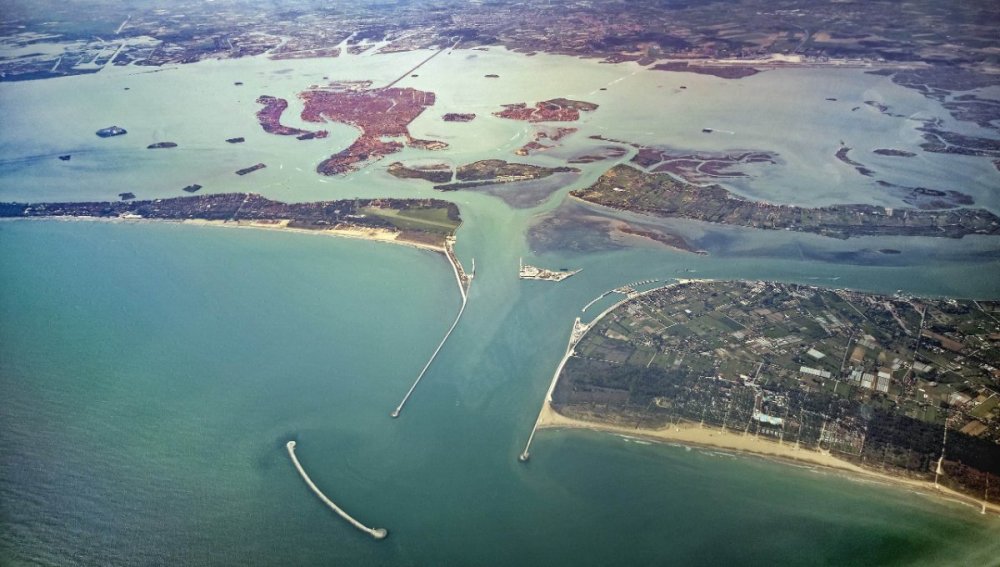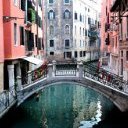Welcome
The Living Lab of Venice and its lagoon
P38 -  IUAV, in collaboration with P1 - UNIVE, is working on the activation of a Living Lab in the Venice lagoon.
IUAV, in collaboration with P1 - UNIVE, is working on the activation of a Living Lab in the Venice lagoon.
The starting point has been the meeting and exchange with scholars and experts that today are studying and experimenting in this complex territory, from different points of view. Iuav has involved other researchers and scholars active in the lagoon on food-related issues, setting up a multidisciplinary group capable of bringing to the table experience, knowledge and social networks consolidated in previous projects. In particular, Iuav has entered into an agreement with the Centre for Environmental Humanities at Ca' Foscari University of Venice (NICHE) and the doctorate in Historical, Geographical and Anthropological Studies of Padua University. These scholars are now sharing their networks of contacts, built on previous research experiences in the lagoon, proceeding in the rising up of interest and in the engagement of local communities of the food system arena.
A crucial point will be the involvement of local administrations and public bodies that face and deal with the lagunar space and its foodshed. In collaboration with the network of scholars, Iuav is defining a knowledge document to be shared with local administrations to inform them about the Cities2030 project, its aims and methodologies. Starting from bilateral meetings with local authorities, the multidisciplinary group intends to start working on the set up of the CRFS Lab in Venice.
Therefore, the group of experts is now working on two directions: on the one side, the involvement of local administrations that are already developing activities, projects and even policies dealing with specific aspects of the food system; on the other side, the engagement of local actors of the food system, from the production to the consumption, including enterprises, consortia, associations and citizens.
So far, the work on Venice and its lagoon has been developed as follow:
- Scouting of stakeholders. IUAV and UNIVE joined their local network of actors to be involved in the Living Lab, thanks to previous research and actions experiences in the territory. On the one hand, the two partners can put on the table networks of citizens, associations and enterprises that gravitate in the food system arena. On the other hand, they are working to officially involve local administrations and other public bodies that have roles in the food system governance.
- Activating the CRFS Labs. IUAV and UNIVE organised two meetings in order to support the setting up of CRFS Labs, finding the interest of several interlocutors, both at governance level and at practices level. Partners also organised bilateral meetings with specific stakeholders, such as researchers and experts from different fields of knowledge, in order to enrich and enlarge the group of facilitators.
- Capitalising existing knowledge. IUAV and UNIVE are systematising the knowledge on the Venice food system, built inside previous experiences and projects. A shared knowledge framework is under construction, in order to have a more complete picture of the state of the art of such complex territory. This framework will be open to diverse forms of knowledge: both the technical-scientific one, and the local-practical one.
According to CRFS Labs Prototyping Guidelines & Toolkit document, the ongoing work is already responding to some of the tasks in the phasing proposed by the toolkit:
- To understand and to explore CRFS: recognising the paths of change. The numerous previous researches on the Venice lagoon make it possible to have at our disposal a body of technical knowledge, with both quantitative and qualitative data, that is already quite relevant. This knowledge is in the process of being supplemented with information and data specific to the lagoon food system, through physical explorations, interviews, interactions with experts, and exercises conducted together with students and members of the local community. The aim is to integrate practical-local knowledge with the technical-scientific knowledge already held by the research team.
- To set up CRFS Lab: organising resources and time available. In the case of the Venetian lagoon we are faced with two levels of complexity: on the one hand, the intrinsic one of the food system, multi-scaled and multi-actor; on the other hand, that of the territory itself, comprised between land and sea, of enormous ecological value and at the same time inhabited and exploited for economic purposes. For this reason, CRFS LL stands as an ever-growing and evolving platform, both in terms of actors involved and in terms of actions to be taken.
- To co-create, to co-design, to experiment: real-life testing of proposed innovative activities. The work is moving toward an incremental methodology, which pursues, almost in parallel, the construction of a shared knowledge of the lagoon food system and the design of possible policies and process innovations. This is necessitated by a number of factors: some participants already have clear possible projects and innovations to bring to the food system or part of the supply chain and need coordination; other territorial entities need more effort to understand existing dysfunctions and imagine new collaborations and synergies; other potential participants need to see the start of some initiatives before deciding whether to join the CRFS LL community.
-
To evaluate: monitoring and learning. This phase has not yet begun.
The scope of Venice and its lagoon’s Living Lab
The lagoon of Venice is a complex territory where a fragile and unique ecosystem hosts a vibrant life, the result of different human activities and dynamics. Venice is a global tourist flow destination, it has a rich and important historic, cultural and artistic heritage, it has a relevant industrial plant and an important industrial and commercial harbour. All these impactive activities rely on a peculiar environment, not totally natural, as it is the result of centuries of transformation and management operations, but crucial in terms of biodiversity preservation and climate change mitigation. Historically, Venice has been able to guarantee remarkable levels of autonomy in terms of food supply, producing inside the lagoon a wide range of food products from land and water.
Today, it would be anachronistic thinking about a food autarchy for this territory; however, there is a rising interest from the community on valorising local products, shortening food supply chains and closing resources cycles. This interest is moved by the awareness that global transformations (economic, social, environmental) are more and more unpredictable, that our foodshed are extremely geographically extended, and that our systems are very impactive on the environment.
The scope of this CRFS LL is to understand the potential of the territory in promoting a food transition for local communities and enterprises, increasing the level of food autonomy of the city and its lagoon, but also improving the resilience and compatibility with the environment.
The IUAV team (P38) works in continuous relation with researchers coming from other two Universities (University of Ca' Foscari and University of Padua) and the European Project Consulting (P2). The Venice CRFS lab core team is composed of six people (advanced scholars, post-doc researchers, and doctoral students) coming from diverse fields of expertise (urbanism, landscape planning, geography, anthropology). The collaboration with other local researchers provides additional and necessary knowledge from other fields (art, biology, agronomy, and local history).
The living lab activities are mainly developed with a limited set of resources and only one post-doc researcher is full-time involved in the project. Additional financial resources would facilitate the process.
The Venice CRFS Lab is based on an already existing network of local stakeholders, built on the quadruple helix system (business environment, governance, academia, and public as in citizens/ civil society).
Iuav has involved other researchers and scholars active in the lagoon on food-related issues, forming a multidisciplinary group capable of bringing together experience, knowledge, and social networks established in previous projects.
In particular, Iuav is collaborating with: the Department of Economics and the Centre for Environmental Humanities at Ca' Foscari University of Venice; and the Doctorate in Historical, Geographical, and Anthropological Studies at the University of Padua.
To ensure the collaboration with public administration and in collaboration with the mentioned scholars, Iuav is defining a knowledge document to share with local institutions to inform them about the Cities2030 project, its goals, and methodologies. Starting with the bilateral meetings with local authorities, the multidisciplinary group intends to ensure their participation.
Cultural institutions (M9, Ocean Space) have also been actively involved in the activities of the Venice CRFS Lab. In addition to that, students from seven diverse Italian universities and research institutions have been involved in the Lab activities.
Finally, involved researchers can count on individual local social networks that can reach other scholars, experts, activists, artists, journalists who are variously engaged in food related topics.
The main tool that the living lab intends to develop during the funding period is the food atlas, which is intended to facilitate the achievement of the intended goals and to involve lab participants as much as possible, in a process of co-construction of the atlas itself.
Objectives of the CRFS LL of the Venice Lagoon
- Mapping food supply chains, both mainstream and conventional as well as niche ones, in order to have a more complete picture of the state of affairs, capable of revealing dysfunctions and critical issues within the food system. Particular importance will be given to the spatial dimension and the transformative impacts that supply chains have on the territory and lagoon ecosystems.
- Identify systemic dysfunctions and criticalities related to supply chains, as well as paradoxical conditions such as, for example, the lack of supply-demand matching within the lagoon territory. This reconnaissance should be followed by a careful analysis of the state of affairs, aimed at identifying the most urgent issues and/or those most easily addressed in terms of innovation processes.
- Recognize existing or potential links between supply chains, both those that produce dysfunction and those that can be a lever to change and innovation. New collaborations, synergies and exchanges between actors and supply chains constitute the ground on which new innovation processes can be grafted.
Pilot partners of the CRFS LL of the Venice Lagoon
As already described above, the Iuav working group has already activated a Venetian network of experts who in various ways are observing the economic, environmental and social phenomena linked to the food system.
In addition to this, other networks or individual actors have been involved in the Cities2030 project.
- The signatories of the Wetland Contract, signed in July 2021, which brings together institutional actors, professional and civic associations of the northern lagoon, interested in innovative forms of multilevel governance for the protection of lagoon biodiversity;
- Trade associations, in particular of farmers and fishermen, active in the lagoon and interested in the transition of existing production models;
- Cultural and artistic associations which, although not operating within the food chain, have been working for years in terms of knowledge, dissemination and involvement of active citizens on sensitive issues related to food;
- Local public institutions interested in developing projects, initiatives and policies capable of increasing the level of sustainability of the food system, making all members of society safe, guaranteeing economic development compatible with environmental fragilities.

.jpg.f3463f7775c915874acb2cb39874bb89.jpg.af3b9ea5d37b63878742edbeef4992d3.jpg)
